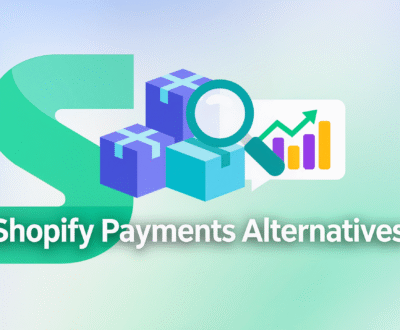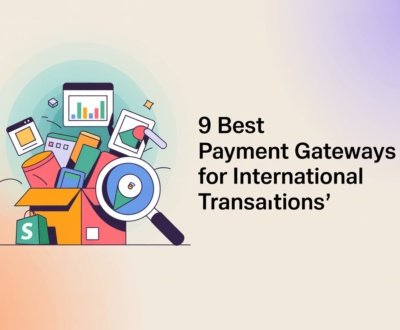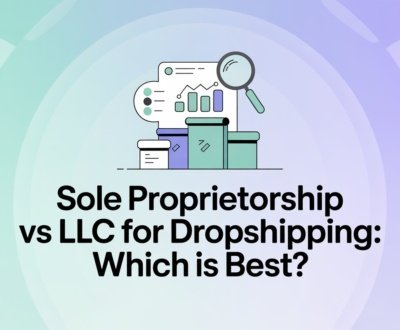Dropshipping Payments: Everything You Need to Know in 2025
- October 7, 2025
- Payment gateway
Estimated reading time: 15 minutes
The digital marketplace pulsates with constant evolution, and for the savvy dropshipper, understanding the intricate dance of payments is not merely an option—it’s an absolute imperative. As we delve into 2025, the landscape of e-commerce transactions is more dynamic than ever, shaped by technological advancements, shifting consumer behaviors, and an ever-present need for robust security. Forget merely accepting money; your aim is to curate a frictionless, secure, and globally accessible financial journey for both your customers and your operational flow. This isn’t just about managing money; it’s about mastering the very heartbeat of your dropshipping enterprise.
Imagine a vibrant, interconnected web of transactions, where digital wallets seamlessly pass funds, and secure data flows between continents. This image embodies the sophisticated yet accessible financial architecture crucial for modern dropshipping.
Key Takeaways
- Payment Ecosystem: Distinguish between payment gateways (secure data transmission) and payment processors (fund transfer orchestration). Many providers now integrate both functionalities for simplicity.
- Dropshipping Workflow: Understand the four stages: capturing customer funds, remitting to suppliers (promptly!), managing operational expenses, and securing your profit.
- Pivotal Solutions: Leverage established platforms like PayPal (with a business account), Stripe (be mindful of regional policies), and Shopify Payments (for Shopify stores).
- Diverse Payment Offerings: Increase conversion by offering various options, including digital wallets (Apple Pay, Google Pay), Buy Now, Pay Later (BNPL) services, and even real-time or QR code payments.
- Strategic Selection: Choose payment providers based on user experience, transparent costs, fast payout times, broad card acceptance, multi-currency support, and robust security (especially AI/ML fraud prevention).
- Fraud Mitigation: E-commerce fraud, including AI-driven scams and e-skimming, is rising. Combat chargebacks with superior quality, proactive communication, responsive support, and AI-powered fraud management.
Table of Contents
- Deconstructing the Payment Ecosystem: Gateway vs. Processor
- The Dropshipping Payment Workflow: A Four-Stage Orchestration
- Pivotal Payment Solutions for Dropshippers: A Detailed Examination
- Architecting Your Payment Strategy: Essential Selection Criteria
- Navigating the High-Stakes World of Payment Fraud in Dropshipping
- Frequently Pondered Queries on Dropshipping Payments
Deconstructing the Payment Ecosystem: Gateway vs. Processor
Before diving into the mechanics, let’s clarify two terms often used interchangeably, yet distinctly different: the payment gateway and the payment processor. Think of them as vital, interconnected components in your digital financial machinery, each performing a specialized task to ensure your transactions run smoothly.
The Payment Gateway: Your Digital Commerce Concierge
A payment gateway is essentially the digital storefront’s secure portal, the first point of contact for your customer’s payment information. When a shopper enters their credit card details or selects a digital wallet option on your checkout page, the gateway acts as a high-security courier. It encrypts this sensitive data, transforming it into an unreadable code, and then transmits it securely to the next stage of the transaction. It’s the essential bridge between your online store and the larger financial network, ensuring that sensitive information travels through a fortified channel, akin to a VIP lounge with advanced security protocols.
The Payment Processor: The Financial Transaction Maestro
Once the payment gateway has securely transferred the encrypted data, the payment processor takes center stage. This entity is the true orchestrator of the financial transaction, acting as the crucial intermediary that facilitates the movement of funds between your customer’s bank (the issuing bank) and your business’s bank (the acquiring bank). The processor communicates with all parties—the customer, the merchant, the issuing bank, the gateway, and the acquiring bank—to verify the funds’ availability and approve or decline the transaction. If approved, it diligently ensures the funds begin their journey toward your merchant account. It’s a complex, multi-faceted role, ensuring that every digital dollar or euro reaches its rightful destination.
To further illuminate their distinct yet collaborative functions, consider this concise comparison:
| Feature | Payment Gateway | Payment Processor |
|---|---|---|
| Primary Use | Securely captures and transmits customer payment data from your store. | Manages the actual transfer of funds between banks; verifies and settles transactions. |
| Core Function | Encryption, fraud checks, tokenization, secure communication. | Authorization, clearing, settlement, reporting. |
| Benefit | Provides a secure portal for customers to input payment information; protects data. | Ensures funds are verified and moved; acts as the financial engine behind the transaction. |
| Examples | Authorize.net, Braintree | Worldpay, Square (though many providers like PayPal/Stripe integrate both functions). |
Many contemporary providers, such as PayPal and Stripe, have ingeniously bundled both gateway and processor functionalities into a single, comprehensive service. Opting for such integrated solutions often simplifies your operational overhead, allowing a unified entity to manage the entire transactional lifecycle from initial customer input to final fund settlement.
The Dropshipping Payment Workflow: A Four-Stage Orchestration
The financial rhythm of dropshipping, while appearing complex, follows a logical and predictable four-stage workflow. Understanding each phase is crucial for managing cash flow, customer expectations, and supplier relationships effectively.
Stage 1: Capturing Customer Funds – The Initial Exchange
The journey of a dropshipping payment begins the moment a customer, enticed by a product in your online store, proceeds to checkout. They add their desired items to the digital cart, input shipping details, and then, with a simple click, tender payment using their preferred method—be it a credit card, a digital wallet like Apple Pay or Google Pay, or even a Buy Now, Pay Later (BNPL) option.
This is where your chosen payment gateway and processor spring into action, ensuring the customer’s financial information is handled with the utmost security. In 2025, digital wallets and BNPL services are increasingly pivotal. Over half the global online transactions now leverage digital wallets, lauded for their speed and robust, tokenization-based security. BNPL options, offering installment plans, have also matured, becoming a significant driver for boosting conversion rates and average order values. Depending on the payment method, it might take anywhere from an instant to a few business days—typically one to five—for these funds to reflect in your bank account. Faster settlements, often associated with credit card transactions, help maintain a brisk pace.
Stage 2: Remitting to Your Suppliers – Timely Fulfillment
Once you’ve received your customer’s payment, the baton passes to you: it’s time to secure the product from your dropshipping supplier. Unlike a traditional retail model, your payment to the supplier is a separate, deliberate action. There isn’t an automatic transfer of funds from your customer directly to your supplier.
The pressing question often arises: should you wait for the customer’s payment to clear in your account, or should you pay your supplier immediately? In today’s expedited delivery environment, influenced by giants like Amazon Prime, customers expect swift fulfillment. Delaying payment to your supplier means delaying dispatch, directly impacting customer satisfaction. Therefore, the strategic approach is to pay your supplier as soon as the customer places their order. Your supplier will typically not initiate order processing until they confirm receipt of payment.
Most dropshipping suppliers readily accept major credit cards, a preferred method due to its speed and often, built-in fraud protection. For local suppliers, PayPal is another swift and reliable option. While bank-to-bank transfers can be used, their longer processing times (sometimes three business days or more) make them less ideal for maintaining rapid fulfillment. For those dropshippers nurturing long-term supplier relationships, negotiating a credit account can streamline operations, allowing for consolidated monthly payments. For international supplier payments, services like Wise (formerly TransferWise) or Payoneer offer favorable exchange rates, translating into significant cost savings.
Stage 3: Managing Operational Expenses – Sustaining Growth
With the supplier paid and the product en route, it’s crucial to allocate funds for the various operational expenses that underpin your dropshipping venture. While dropshipping minimizes inventory costs, it is not devoid of financial outlays. These “minor” expenses, when accumulated, can quickly become substantial. Common business expenditures include advertising campaigns, transaction processing fees (which we’ll explore in detail), website hosting and maintenance, e-commerce platform subscriptions, essential plugins, and, of course, taxes. Prudent financial management dictates setting aside a portion of your revenue for these ongoing costs to ensure the sustained health and growth of your business.
Stage 4: Securing Your Profit – The Ultimate Reward
The final stage of this financial orchestration is perhaps the most gratifying: recognizing your profit. This is the capital remaining after all product costs, supplier payments, and operational expenses have been meticulously accounted for. Should your calculations reveal a less-than-desirable profit margin, it serves as a clear signal for strategic introspection. It’s an opportunity to scrutinize your cost structures, refine your pricing strategies, and intensify efforts to enhance revenue streams. A continuous focus on optimizing these factors is the hallmark of a successful, enduring dropshipping enterprise.
Pivotal Payment Solutions for Dropshippers: A Detailed Examination
Offering a diverse array of payment methods is not just a convenience; it’s a strategic imperative. Data consistently shows that approximately half of all online shoppers will abandon their cart if their preferred payment option is unavailable. Consequently, equipping your store with a versatile payment infrastructure, often facilitated by a robust payment gateway, becomes paramount.
PayPal: The Global E-Commerce Stalwart
PayPal remains arguably the most recognized and widely adopted payment gateway, cherished by both merchants and customers worldwide. Its expansive reach across over 200 countries and territories makes it an ideal cornerstone for any dropshipping operation with global aspirations. PayPal readily accommodates all major credit cards, including American Express, Mastercard, and Visa, and can seamlessly integrate with other gateways like Stripe, providing a layered payment experience.
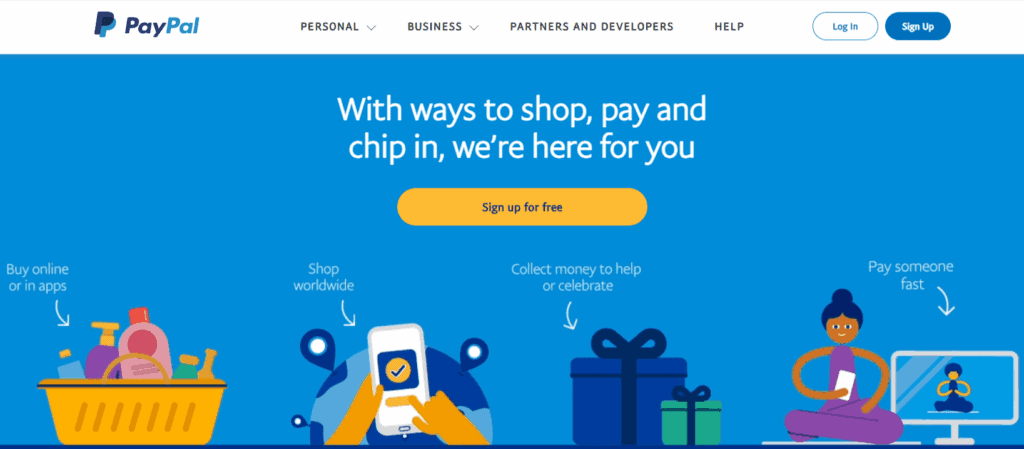
For dropshippers, selecting the appropriate PayPal account is non-negotiable. Always opt for a business account over a personal one. Dropshipping, by its very nature, is a commercial endeavor involving multiple online transactions and the inevitable occurrence of disputes or chargebacks. A business account lends legitimacy to your operations, which can significantly mitigate such challenges.
To proactively safeguard against PayPal account limitations or bans, several best practices are advisable. Beyond utilizing a business account, establishing a formal business entity and providing comprehensive documentation during registration are crucial. A fundamental safeguard involves meticulously uploading tracking numbers for all your orders directly to PayPal. This transparency validates the legitimacy of your shipments. Furthermore, maintaining proactive and consistent communication with your customers—providing shipping updates and estimated delivery times—can drastically reduce anxiety, thereby minimizing the likelihood of chargebacks, a common trigger for account issues.
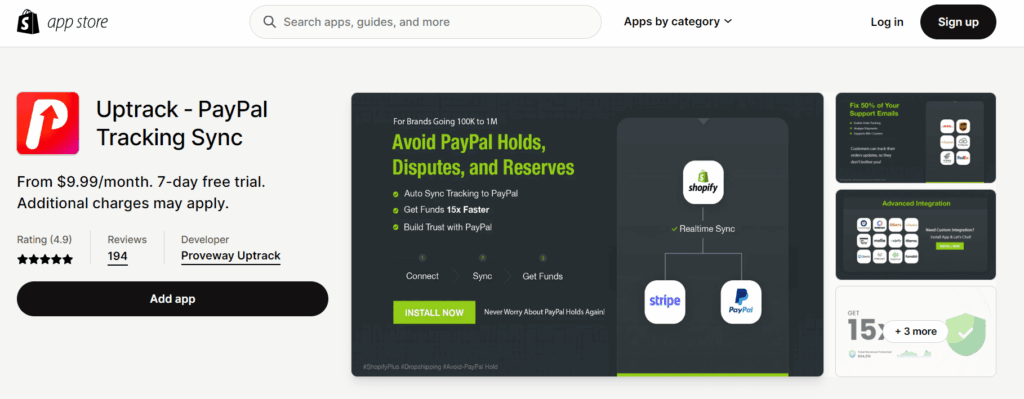
Stripe: The Agile Platform for Modern Commerce
Stripe stands as another formidable payment gateway, revered by businesses ranging from burgeoning startups to established corporations. Available in over 25 countries, Stripe boasts seamless integration capabilities with leading e-commerce platforms such as Shopify and WooCommerce. Much like PayPal, it accommodates all primary credit cards and enjoys widespread popularity, particularly across regions like Australia, Canada, and the United Kingdom.
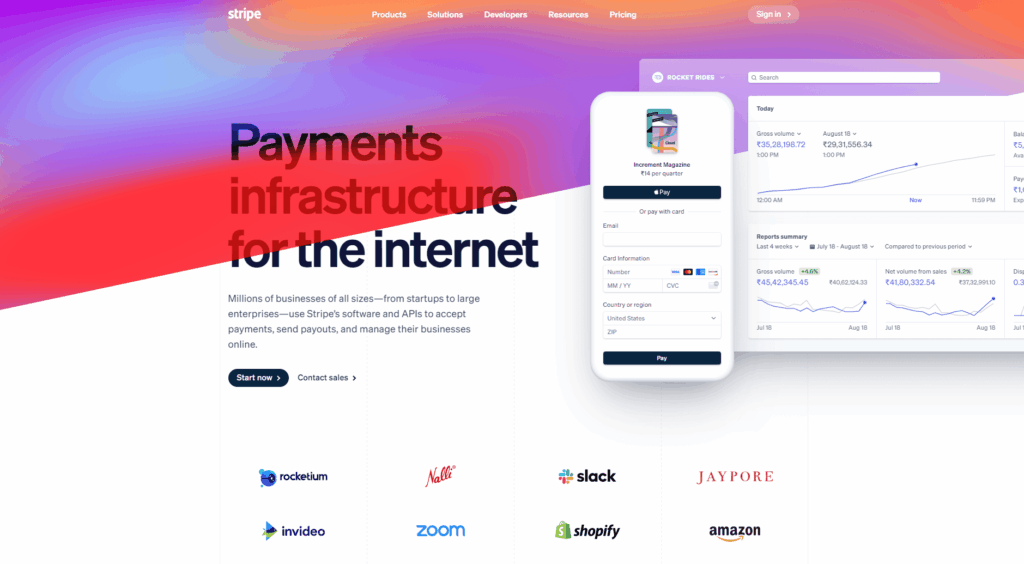
However, Stripe’s dropshipping policy presents a nuanced geographical consideration. While it generally permits dropshipping businesses located in the United States, it often imposes restrictions or declines applications from businesses operating within the Asia-Pacific (APAC) or Europe, the Middle East, and Africa (EMEA) regions. This distinction primarily stems from Stripe’s assessment of dropshipping as a higher-risk business model, particularly in regions that historically experience elevated chargeback rates.
Mitigating the risk of account limitations or bans with Stripe revolves around diligent customer dispute prevention. Strategic measures include:
- Supplier Vetting: Partner with reputable dropshipping suppliers known for prompt order dispatch and reliable shipping services, thereby minimizing delivery delays.
- Exemplary Customer Service: Proactive communication is key. Keep customers informed throughout the shipping process, addressing concerns before they escalate into disputes or chargebacks, which are frequently triggered by delayed or incorrect orders.
- Advanced Chargeback Management: In the inevitable event of a chargeback, leveraging specialized services like Chargeflow, which employs AI to dispute claims, can significantly improve your win rate and protect your bottom line.
Shopify Payments: Seamless Integration for Shopify Stores
Shopify Payments, the proprietary payment gateway developed by Shopify, offers an integrated and streamlined solution for merchants operating on its platform. Its setup process is remarkably straightforward, and it is available in a growing list of countries, including the United States, Canada, Australia, the United Kingdom, and numerous European and Asian markets.
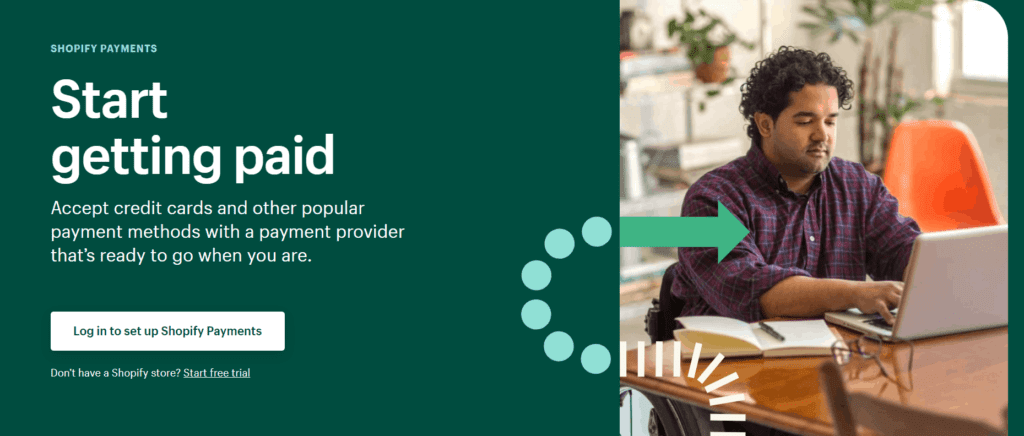
For Shopify dropshippers, the good news is that Shopify Payments actively supports the dropshipping business model. Eligibility simply requires you to be a Shopify merchant operating from one of its supported countries. A common query among merchants concerns fund retention. Rest assured, Shopify Payments does not typically hold your money; customer payments are usually remitted to your bank account on the same business day. Merchants also have the flexibility to schedule payouts, although specific regional regulations, such as in France (no custom schedules) or Japan (default Friday payouts), may apply.
Beyond the Usual: Exploring Other Payment Avenues
While PayPal, Stripe, and Shopify Payments command significant market share, diversifying your payment offerings to include alternative methods can dramatically enhance your customer experience and global reach.
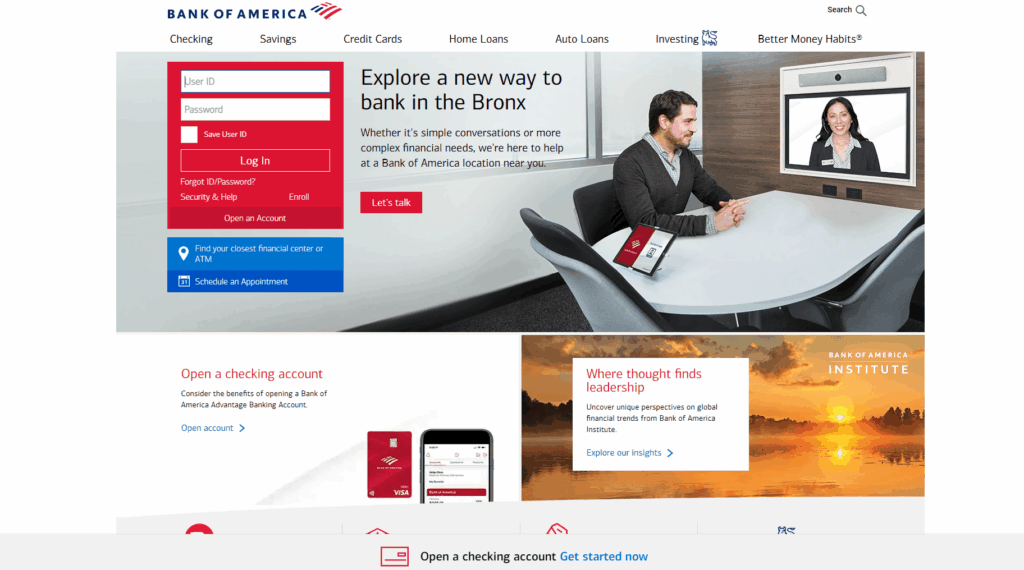
Bank Transfers: Strategic for Large Volumes
A direct bank transfer represents a foundational method for financial transactions. While typically eschewed by individual online shoppers in favor of more immediate options, it can be a strategic choice for larger, B2B-style dropshipping transactions or for settling substantial supplier invoices. The primary drawback for standard e-commerce is the delay; funds usually take one to three business days to clear, which can impede rapid order fulfillment and negatively impact customer satisfaction. Therefore, for direct customer payments, its utility in dropshipping is generally limited.
Cash on Delivery (COD): A Calculated Risk
Cash on Delivery (COD), where customers pay cash directly to the courier upon receipt of their order, once provided a sense of security for online shoppers. However, with advancements in online payment security and fraud protection, its appeal has diminished. Most modern dropshippers shy away from offering COD due to inherent risks. The foremost risk is fraud, where unscrupulous customers may cancel orders mid-transit or upon delivery, leaving the dropshipper to absorb return shipping costs. Additionally, courier companies often levy extra fees for COD services, further eroding profit margins.
Emerging Methods: Digital Wallets & BNPL
Beyond these traditional and established methods, the payment landscape in 2025 is increasingly shaped by innovative solutions. Digital wallets like Apple Pay, Google Pay, and Shop Pay are not just convenient; they offer enhanced security through tokenization, making them a preferred choice for over half of global online transactions. Their speed and ease of use significantly reduce checkout friction.
Buy Now, Pay Later (BNPL) services, exemplified by Klarna, Afterpay, and PayPal’s own BNPL offerings, have moved beyond being a novelty. They are now a mature segment of the market, projected to grow significantly by 2025. Offering BNPL can substantially boost conversion rates and average order values by providing customers with flexible payment options.
Real-time payments and QR code payments are also gaining traction, facilitating instant settlements and supporting seamless omnichannel shopping experiences. Furthermore, a growing segment of consumers appreciates the option to pay with loyalty points, reward programs, and prepaid cards, though these alternative methods also present new vectors for fraudsters due to historically weaker security controls.
Architecting Your Payment Strategy: Essential Selection Criteria
Choosing the optimal payment methods for your dropshipping store demands careful consideration. It’s not a one-size-fits-all decision but rather a strategic alignment with your business model, target audience, and operational capacities. Here are the pivotal factors to weigh:
Streamlined User Experience and Platform Harmony
The paramount goal of any payment gateway is to render the checkout process as smooth and intuitive as possible. A clunky, complicated payment experience is a notorious catalyst for abandoned carts and lost sales. Therefore, prioritize gateways that offer seamless integration with your e-commerce platform (e.g., Shopify, WooCommerce) and provide a clean, user-friendly interface for your customers. An effortlessly navigable checkout path is a direct conduit to higher conversion rates.
Understanding the Financial Mechanics: Costs and Fees
The cost associated with processing payments can significantly impact your dropshipping profitability. These costs typically encompass a combination of setup fees, recurring monthly charges, and per-transaction fees. A meticulous comparison of various payment gateways’ pricing models is indispensable. Investigate the percentage-based fees, fixed charges per transaction, and any hidden costs. Selecting a provider with transparent and competitive fee structures is fundamental to preserving your profit margins.
Expedited Fund Access: Payout Timelines
While a customer’s payment might be authorized instantaneously, the actual transfer of funds to your merchant account can vary from a few hours to several days, contingent upon the payment service provider. These payout times, or settlement periods, are a critical cash flow consideration. Investigate the typical payout schedules of prospective providers and whether they offer options for customized disbursement timetables. Quicker access to your funds enables more agile inventory replenishment and business operations.
Broad Acceptance: Card Types and Local Options
Most leading payment gateways universally accept major credit cards such as American Express, Mastercard, and Visa. However, the more expansive providers like Stripe and PayPal, and others like Mollie, often support a broader spectrum of lesser-known card types, including Diners Club or UnionPay. Crucially, research the predominant payment methods favored by your target demographic. For instance, if your primary market is Germany, ensuring acceptance of local payment solutions like Klarna is vital. A diverse range of accepted payment types caters to a wider customer base and reduces abandonment rates.
Global Reach: Multi-Currency Capabilities
For dropshippers operating in the global marketplace, the ability to process transactions in multiple currencies is not merely an advantage; it is an absolute necessity. Your chosen payment provider must facilitate seamless multi-currency support, allowing international customers to pay in their local currency. This localized experience not only enhances convenience but also builds trust and significantly improves conversion rates for cross-border sales.
Fortified Security: Safeguarding Transactions and Preventing Fraud
In 2025, with e-commerce fraud projected to reach staggering figures, the security features of your payment provider are paramount. Prioritize gateways that offer robust security protocols, including PCI DSS compliance (Payment Card Industry Data Security Standard), advanced encryption, and tokenization to protect sensitive customer data.
Crucially, look for providers integrating AI and machine learning (AI/ML) into their fraud prevention systems. These sophisticated tools can perform real-time detection, analyze behavioral patterns, and adapt to emerging threats like AI-driven scams, deepfakes, and synthetic identities. Vigilance against e-skimming (like Magecart attacks that steal card data from compromised checkout pages) is also essential, necessitating regular security audits and timely plugin updates for your store. By prioritizing strong security, you not only protect your customers but also safeguard your business from substantial financial losses and reputational damage.
Navigating the High-Stakes World of Payment Fraud in Dropshipping
The digital payment realm, while offering unparalleled convenience, is also a battleground against increasingly sophisticated fraudulent activities. For dropshippers, who often operate with tighter margins and global reach, understanding and mitigating these threats is non-negotiable.
The Ascendant Threat: Exponential Fraud Growth & AI-Driven Scams
E-commerce fraud is on an alarming trajectory, with projections indicating a rise from an estimated $44 billion in 2024 to a staggering $107 billion by 2029. This exponential growth underscores a critical reality: digital payment methods, while efficient, present new attack surfaces for malicious actors. High-risk merchants, including many dropshippers, are now contending with AI-driven scams that leverage deepfakes, synthetic identities, and automated bots. These sophisticated tools relentlessly target digital-first payment channels, exploiting vulnerabilities with unprecedented precision.
Countering Chargebacks: Proactive Measures
Chargebacks represent a significant financial drain, with losses escalating to $8.9 billion in 2024. These reversals, often initiated by customers, can stem from legitimate issues like product non-receipt or discrepancies, but are also increasingly weaponized by fraudsters. Effective chargeback mitigation hinges on:
- Superior Product Quality & Timely Delivery: Source from reliable suppliers known for consistent quality and swift, dependable shipping.
- Proactive Communication: Keep customers perpetually informed about their order status. Timely updates on shipping and delivery expectations can dramatically reduce anxiety and the impetus for chargebacks.
- Responsive Customer Support: Resolve customer inquiries and complaints with alacrity and professionalism. A swift, satisfactory resolution can often preempt a chargeback.
- AI-Powered Fraud Management: Deploying advanced fraud management platforms that utilize AI for real-time detection and behavioral analytics can identify and flag suspicious transactions before they escalate into chargebacks.
Securing Your Digital Storefront: Protecting Against E-skimming
The threat of e-skimming, particularly from Magecart attacks, has tripled in recent times. These malicious infiltrations compromise checkout pages, silently siphoning customer credit card data. For dropshippers, this risk is especially pertinent if your store utilizes outdated payment integrations or lacks rigorous security audits. Regular security checks, keeping all e-commerce platform components and plugins meticulously updated, and implementing robust endpoint protection are indispensable defenses against this insidious form of data theft.
Vigilance with Alternative Payments: Loyalty, BNPL, and Prepaid Risks
While alternative payment methods such as loyalty points, Buy Now, Pay Later (BNPL) services, and prepaid cards offer enhanced customer convenience and boost conversion, they have regrettably become new vectors for fraud. Fraud rates for these methods are showing higher attack rates compared to traditional credit card transactions. This highlights a crucial point: as a dropshipper, you must exercise increased vigilance and implement tighter controls when integrating these options. Treat them as potentially high-risk channels for fraud, necessitating enhanced monitoring and verification processes to safeguard your business.
Frequently Pondered Queries on Dropshipping Payments
Navigating the financial currents of dropshipping often sparks a flurry of questions. Let’s illuminate some of the most commonly asked ones.
Upfront Product Costs: Myth vs. Reality
One of the most appealing aspects of dropshipping is the absence of upfront inventory costs. You are not required to purchase products before you sell them. The elegant mechanism of dropshipping dictates that you only pay your supplier for an item after a customer has placed an order in your store and paid you for it. This crucial distinction significantly reduces your initial capital requirements and inventory risk, making dropshipping an accessible business model. Once you receive the customer’s payment, you then instruct your supplier to ship the product directly to your customer.
The Shipping Cost Conundrum: Who Bears the Burden?
In the dropshipping paradigm, the responsibility for shipping costs ultimately rests with you, the dropshipping store owner. Your supplier, upon receiving your payment for the product, will pack and dispatch the order using a pre-agreed courier service, subsequently billing you for the shipping expenses. In some arrangements, and if your supplier permits, you might have the flexibility to arrange your preferred private courier service, potentially optimizing costs or delivery times. Regardless, the financial outlay for shipping is an operational expense you must factor into your pricing and profitability calculations.
The Strategic Advantage of Credit Cards
Utilizing credit cards for your dropshipping business expenses offers several compelling advantages. Beyond the sheer convenience of seamless transactions, credit cards can be instrumental in building business credit, which in turn can unlock higher credit limits and more favorable lending terms as your venture scales. Furthermore, many business credit cards offer attractive rewards programs, providing benefits such as cashback, travel points (airline miles or hotel stays), or other incentives. These rewards can effectively reduce your operational costs, adding a subtle yet significant boost to your overall profitability. Think of it as a small, consistent bonus for prudent financial management.
Starting with a Debit Card: A Prudent Initial Step
For those embarking on their dropshipping journey without immediate access to a credit card, commencing operations with a debit card is an entirely viable option. It allows you to manage your supplier payments and business expenses directly from your bank account. However, it’s important to acknowledge that debit cards do not offer the same credit-building opportunities or the rich array of rewards programs typically associated with credit cards. Consider a debit card as a solid foundational tool, and as your dropshipping business demonstrates consistent growth and profitability, strategically transition to a credit card to leverage its greater financial benefits and protections.
Epilogue: Cultivating Payment Mastery in Your Dropshipping Venture
The journey through the intricacies of dropshipping payments, from deciphering gateways and processors to navigating evolving fraud landscapes, might initially appear daunting. Yet, with the foundational knowledge now at your disposal, you possess a clearer roadmap for financial success. Mastering your payment strategy is about more than just transactions; it’s about building trust, ensuring operational efficiency, and securing your profitability in a dynamic digital world.
Remember, the e-commerce environment is in perpetual motion. Digital wallets, BNPL services, and AI-powered fraud prevention are not static trends but evolving pillars of modern commerce. Your ability to adapt, integrate new solutions responsibly, and remain vigilant against emerging threats like e-skimming and sophisticated scams will be the hallmark of a resilient and prosperous dropshipping business. Equip yourself with the right tools, cultivate a proactive mindset, and confidently steer your dropshipping venture towards sustained financial mastery.
About us and this blog
We are a digital marketing company with a focus on helping our customers achieve great results across several key areas.
Request a free quote
We offer professional SEO services that help websites increase their organic search score drastically in order to compete for the highest rankings even when it comes to highly competitive keywords.
Subscribe to our newsletter!
More from our blog
See all postsRecent Posts
- Dropshipping Payments: Everything You Need to Know in 2025 October 7, 2025
- Shopify Payments Alternatives: Best Payment Gateways for You October 7, 2025
- 9 Best Payment Gateways for International Transactions October 7, 2025

